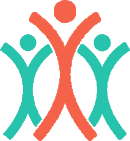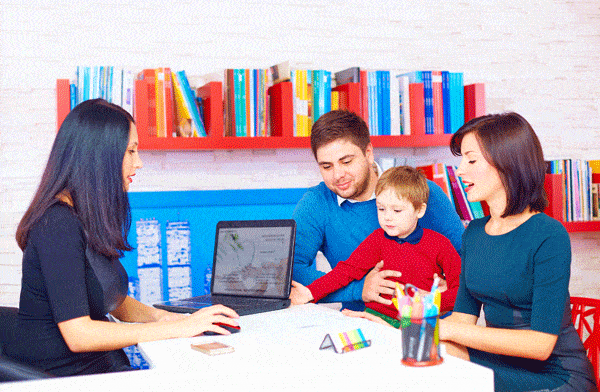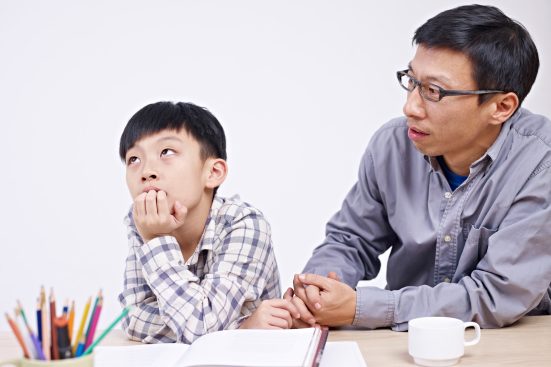Take a moment to remember a time in the last few days in which you felt stressed, frustrated or worried. Reflect for a moment on your body in that moment. Your heart rate had sped up a little, you were breathing a little quicker, your body temperature rose slightly and your muscles were more tense than usual. You might not have noticed these things at the time because you were focused on whatever problem you were managing, but it was there in the background.
This reaction is a deep seated physical response for humans, and as a professional working with young people you know full well this happens for them too.
Whenever the children/teens we work with perceive some kind of danger, threat or problem, their bodies react by increasing what can be called their “physiological arousal”- either just slightly (eg they might say they have a headache because they’ve had tense shoulders for example at the end of the day) or a significantly (they might hyperventilate, experience heart racing, or rigid body which makes them scream/yell or stops them even being able to talk).
It’s important to know that this response can happen in response to an actual present danger or threat (a large dog jumping on them for example) or an imagined one (thinking about a test coming up, being away from us, an argument with one of their friends).
From an evolutionary (and survival) point of view: this reaction was helpful. It made humans in ancient societies quicker to respond to things which might hurt them – fast breathing, tense muscles and fast heart rates help pump blood into major muscle groups, get oxygen to muscles and helps us move quickly. This is why psychologists sometimes call this reaction the “Fight, Flight, Freeze” response.
Unfortunately this kind of high level of physiological tension has some unwanted side effects – in both the short and long term.
As I’m sure you know, when we are in the midst of a fight/flight/freeze response, our ability to think, communicate, remember complex information and explain ideas is reduced. There are many ways to talk about this (eg upstairs/downstairs brain, “flipping the lid”, “reptilian/lizard” or “fighting versus thinking” brain). For example, we might say this to families or children:
Whenever our subconscious or conscious brain says “uh oh, big problem” – it jumps into “fight or flight” mode and our “stay safe” brain takes over. This means we are going to have a tough time thinking clearly, talking or remembering information.
In the long term, children who have a high level of physiological tension for a long period of time are more likely to experience increased physical and emotional problems – like ongoing anxiety, headaches and stomache aches, muscle soreness and sleep problems. Again, I explain this to families:
IF a child has lots of times in which they are in “flight or flight” mode, then their body can get very tired over the long term, and leads to other physical problems like headaches, and stress.
It makes sense therefore to help children reduce their physiological tension
In 1908, a psychologist called Edward Jacobsen first proposed that it would be useful to help people to learn to reduce their physiological tension, and 30 years later he wrote a book called: “Progressive Relaxation” which detailed how to tense and then relax each muscle group in the body and the benefits of doing so.
In the 80 years since that time, there have been hundreds of programs developed for adults – and then children – which have physiological tension reduction at the core of what they do.
These programs have various names: “deep breathing programs” and “relaxation training” or “progressive muscle relaxation” are specifically about reducing physiological tension and were discussed by these names frequently in the 1970’s and 80’s.
More recently other programs have been developed and called different names such as mindfulness, meditation, and yoga. These programs usually have broader goals than just reducing physiological tension, however they usually also include relaxing the body as a significant component. (I am currently reviewing research on children’s mindfulness and meditation programs specifically, but in this article I will limit my comments to the more physiologically based relaxation programs. However it is useful to be aware that there is a continuum and overlap between relaxation programs and mindfulness based programs.)
Here’s what we know about the evidence behind relaxation based programs.
- Relaxation based programs do reduce physiological tension
Research has shown that relaxation programs use a set of techniques which do reduce physiological tension. For example, these programs get child to do one or more of the following:
- Deliberately first tense and then consciously relax their muscles, one muscle group at a time
- Relax only (not tense) their muscles (sometimes while visualizing their muscles becoming relaxed)
- Pay attention to and notice their breathing and/or slow it down
There have been experimental studies which put children into relaxation programs and then measure various physiological indicators. The good news is that getting a child or young person to do one or more of the previous techniques for a minute (or more) does reduce heart rate, breathing rate, skin temperature and muscle tension reduces. Even quite young children (eg some research has done this in kindergarten children) can do this successfully.
- Lowering physiological tension has benefits for children’s emotional and physical health, at least in the short term
Mostly beginning in the 70’s and 80’s, there was a flood of research studies to show that when you help children to use relaxation techniques like those above, on a regular basis, children experience physical and emotional benefits – at least in the short term.
These studies have have been conducted in many different settings. Some are with children in classroom-based settings in a general population. Some were conducted with children with sleep problems, those diagnosed with ADHD, ASD,and behavioural challenges. Some were with children with fears about dental procedures, and some for whom had a diagnosis of anxiety disorders.
Most of the time, these studies find that after the end of the relaxation program, there are benefits and increases in: child well being, increased ability to cope with pain, reduced anxiety, reduced behavioural aggression, increased ability to pay attention, increased ability to get to sleep – and a whole host of other benefits.
It’s not surprising therefore that the idea of lowering physiological arousal has since been incorporated into many different psychological treatment programs or packages.
In many (or even most) therapy programs (individual or group) for anxiety, stress, social skills, problem solving and other emotional problems there is a component on reducing breathing speed and muscle tension.
There are also a plethora of apps, audio recordings, CDs, and web based programs, which help children learn to relax
- There are still some limits to this research – and relaxation programs may not be useful in all situations
Relaxation training is not perfect – and the research shows this. For example
- Scientists who have conducted reviews in this area generally conclude that the research is mostly of low quality. Most studies don’t use a control group (meaning the positive results could be a result of something other than the techniques used) have small numbers, non-blind raters – and suffer from a whole lot of other methodological problems. This is partly due to when the research was conducted (it appears scientists do better researchin 2018 than they did in 1978), and it doesn’t suggest relaxation training isn’t useful, however it is important to keep in mind.
- There are very few studies which follow up children in the long term to see if the benefits of the program have last after it has finished.
- A few research studies did actually fail to find positive benefits of the program. Some studies found that relaxation based programs didn’t actually make any difference to factors such as child reported well-being (ie the parents in this study thought it was helpful, but the children didn’t), behavior in the classroom (the teachers in this study thought it was helpful, but it didn’t lead to any reduction in problem behavior)
- Some research studies have suggested some children get the same effect from other interventions. For example, in one study some children experienced the same reduction in physiological arousal by listening to a story than they did to from a relaxation technique.
- Relaxation programs may have some negative effects in some situations. I’ve read at least one study which suggested children in a relaxation procedure actually had an increase in heart rate after the relaxation procedure (this happened after younger children were asked to relax for more than 4 minutes), and in the clinic, I’ve seen some children experience relaxation exercises as unpleasant and feel tense about them.
- Relaxation programs are often not sustained. Research shows that most people who are taught relaxation based strategies don’t sustain or maintain them over the long term.
Should we use relaxation based techniques with children and young people?
Despite the limitations which are outlined above, the many years of research with many different populations which do almost always find benefits of relaxation programs is still compelling enough for it to be an important tool to use to support young people.
I’ve seen the benefits of this time and time again for children/teens we see in the clinic. When children get good at being able to notice their tension, know how to breathe deeply through a stressful situation and relax their tense muscles when they are angry or anxious – they do better in many situations.
However, I think it is important to use these strategies carefully. Here are my recommendations
- We should explain why we want children to relax their body
Children and teens who know why it is important to pay attention to and relax their bodies are more likely to be motivated to do this over their life time and sustain this practice.
We need to explain to them how and why it helps them. This means saying things like:
“Relaxing your body helps us because……….”
“When we slow our breathing down…………..happens”
“I like to try to slow my breathing down because……………….”
- We should teach short and fast relaxation based strategies for children
Long and sustained meditation practices are usually impossible for young children. I like to use exercises with junior primary aged children which are 60 seconds or less. Primary aged children can usually cope with a couple of minutes and adolescents can manage slightly longer periods of time.
- Relaxation strategies for children/teens should be easy and simple
Progressive relaxation which asks children to tense and then relax various parts of their body may be too complex for some children. Breathing based exercises which ask children to breathe in and out at certain rates and in certain ways but also be too complicated for some children.
I think any strategy we want children to use regularly, and in stressful situations needs to be really simple and well explained.
Personally I tell children there are just TWO steps to a relaxed body: a) slow breathing and b) floppy muscles. I teach them to do both these steps – separately and then together. We use some pictures and an animated video to explain this to them.
Other programs and approaches help children to “notice” their body or think about what they can hear, see or feel.
Other programs use imagery to help them relax.
Other programs might use a mindfulness based exercise (eg drawing mindfully) to help them relax. More on this in a later article.
It’s great to give young people an option as to how they might relax their body (we can ask them what works for them) but whatever technique or strategy is used – it must be simple, or children will not be able to do it themselves when they need it.
- We need to help childrenpracticerelaxation – and to do this when they are calm
I am frequently practicing “slow breathing and floppy” muscles with children in sessions. To be honest it’s one of my favourite things to do in the counselling room, from an entirely selfish perspective!
But beside my own enjoyment of the experience, I also know that practice makes the difference. We can’t just explain this once and then expect young people to know how to do this. It is a skill which needs repeating regularly.
Families I’ve worked with incorporate practice times in different ways, for example:
- Three slow breaths/floppy body before we start eating dinner
- Using meditation apps regularly at bedtime
- Parents/adults talking about relaxing their own bodies
- Morning meditations/relaxation exercises/devotion in the classroom
- Slow breathing practice in helping children get to sleep at night
I build in practice of this skill in different ways, for example:
- Providing a record sheet for children to monitor how often they’ve practiced in the first few weeks
- Helping children to set a time of day they will practice
- Starting or finishing sessions with a relaxation exercise
- Helping families set reminders on phone/ipads etc
- We need to help children use relaxation in stressful situations and when they notice themselves tense, worried or stressed.
If children can use a relaxation technique in a situation which makes them stressed, angry or worried, they are likely to experience benefits. However most children need help remembering to do this, and to be motivated to do this.
This is not easy. Did you practice relaxing your body last time you felt stressed? Even for us as adults this is hard to remember (or want to) do. We need to assist children to do this. This might be a verbal (gentle) reminder: “before we talk about this, would you take a big breathe with me”, therapy and classroom posters (Stressed? R.E.L.A.X. your body) and questions: “What might help you relax your body right now? Can I help?”.
Usually this is only successful if we have followed all of the steps above (explanation of why we need to do it, teaching fast and quick methods and having support children to practice).
Bottom line?
Relaxation procedures and strategies for young people should be included as a component of what we do to support them to manage anxiety, frustration and other challenges. It is going to be most effective when we teach children and their parents/caregivers about why it matters, make the techniques fast, simple. It is also going to be most effective if we help children and their families find ways to practice it regularly, and when we brainstorm with them as to how they can remember (and be motivated) to use it at stressful trigger points.



